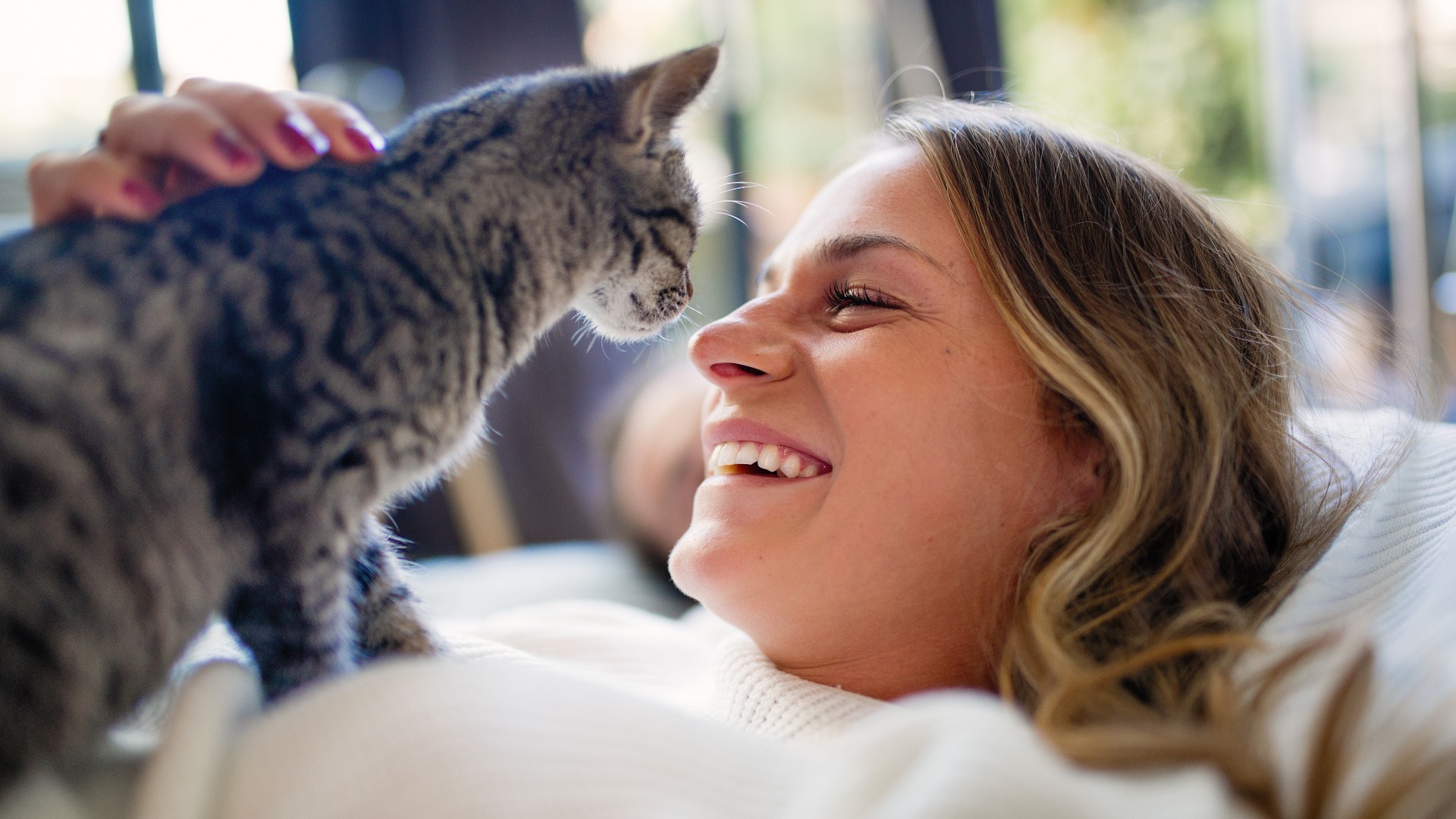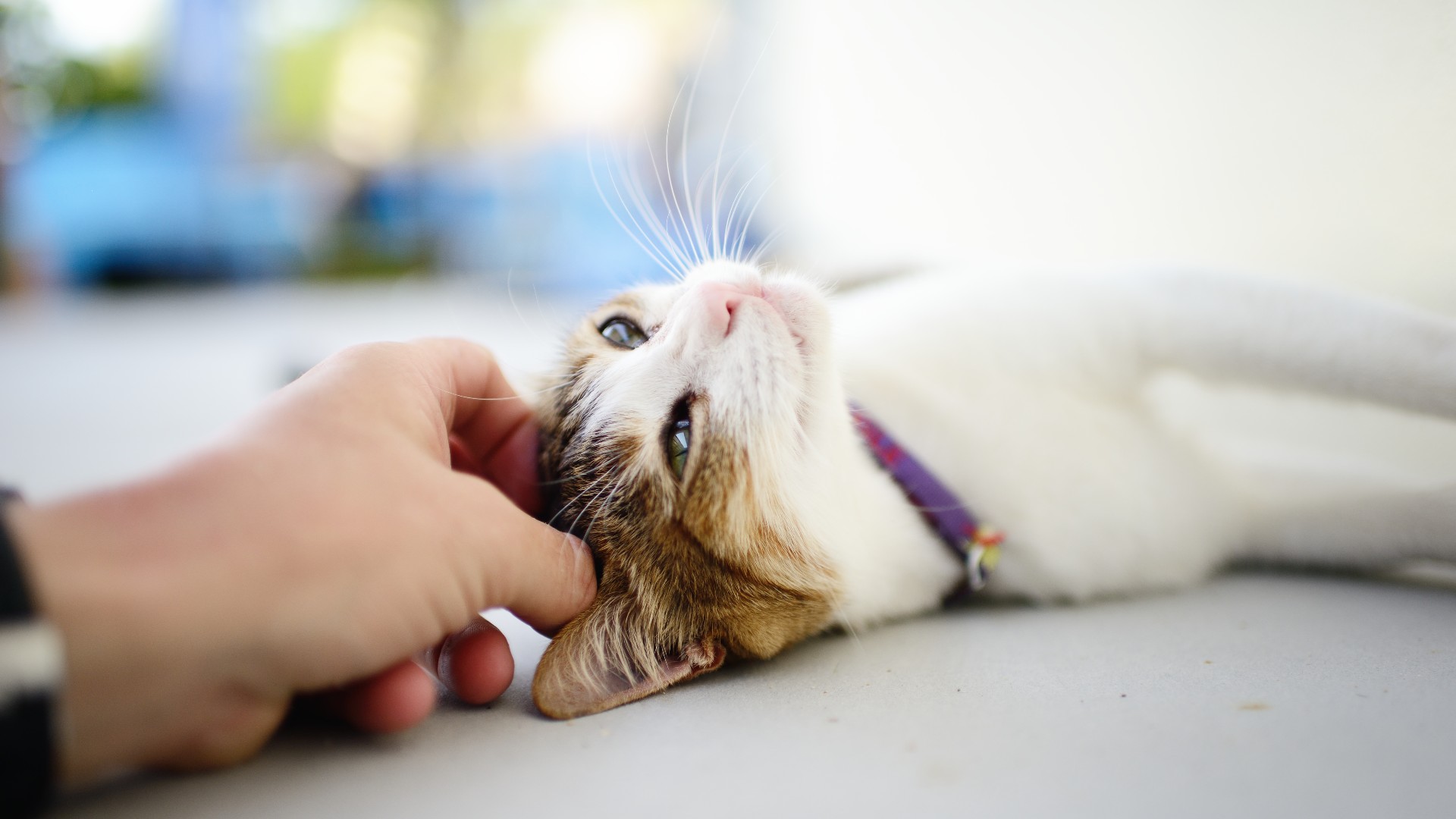Cat chirping: What is it and why do our feline friends do it?
Puzzled by all that cat chirping? We explore why your kitty warbles like a songbird and what it is they're trying to tell you

While chirping may sound like something you’d solely expect to hear from birds, cat chirping really is a thing! One of several methods that our feline friends use to communicate with us and the world around them, chirping is a great sign your kitty is feeling happy and content.
Although cat communication is often viewed as more difficult to decipher than that of our canine companions, a talk given at the World Small Animal Veterinary Association World Congress Proceedings by Dr. Kersti Seksel revealed that the reason humans and cats get on so well is that their communication is more similar than different.
We humans may not chirp, but we do rely on vocal messages and visual signals to get our point across in much the same way that cats do. The sounds we make may be unique to each species, however the intent is the same - to send a message that lets the receiver know what we’re thinking and feeling.
The cat chirp, often referred to as a trill, is very similar to the warbling sound that a songbird makes and it’s one of several common forms of vocalization a cat will use to communicate with their human parent. Below, we explore this sweet sound further, including what it sounds like and when you’re most likely to hear it.
- Why does my cat stare at me? Meanings behind the feline gaze
- Why do cats meow?
- What your cat's tail is telling you: Meanings, facts and its importance
What is cat chirping?
A short, peep-like sound that’s very similar to the noise our feathered friends make, chirping is considered to be a murmuring sound, made with the mouth closed and generally used by cats as a way to greet their human, gain their attention, acknowledge their presence or voice approval.
Cat chirps tend to be quick, repetitive, and quiet, and usually indicate happiness, contentment or excitement. Some cat breeds, such as the Maine Coon and Bengal, chirp a lot more than others, so if you’ve never heard your furkid chirping before, rest assured, it’s nothing to worry about.
Why do cats chirp?
There are two main reasons that cats chirp - one is to communicate with you and the other is to express excitement around something that is going on in the outside world.
Get the best advice, tips and top tech for your beloved Pets
If you're stroking your cat and they’re enjoying it, they may quietly chirp to indicate their approval and to encourage you to keep going. Your fur friend may also chirp when you arrive home as a way of saying hello and letting you know they’re happy to see you, and they may also do it when they’re wanting your attention.
According to cat behaviorist Dr. Susanne Schötz, cats may also use chirping as a hunting instinct whereby they mimic the calls of their prey. “When a bird or insect catches their attention (by making a sound), the cat becomes riveted to the prey, and starts to chirp, tweet and chatter,” she explains.

Cat chirping and body language
If you’re unsure whether the sound your furkid is making is actually a chirp, pay attention to your cat's body language, which will give away some helpful clues.
Because chirping is a sound your kitty will make when they’re happy, it tends to be accompanied by bright, blinking eyes, a swishing tail, ears that are pointed up and gentle head butting. These are all great signs your cat is trying to communicate with you.
Chirping that’s been triggered by their hunting instinct, however, will come with different body language than chirping that’s about connecting with their human, In these instances, look for things like a crouched or stalking pose, dilated pupils and an arched back that signal your kitty is ready to pounce.
How to react when your cat is chirping
While it could be a signal that your feline friend is looking to have their bowl topped up, chirping away from mealtimes is usually a good indication that your kitty wants some attention.
If the chirping is accompanied by gentle head butts, rubbing up against you or walking around you in circles, try spending some quality time with your kitty.
Investing in a good cat brush and grooming your furkid will not only help keep their coat and fur in tip-top condition, it’s also a wonderful way to strengthen the bond the two of you share. Most cats adore having their coat brushed, so it’s also a surefire way to score some extra brownie points!
Finding new ways to entertain indoor cats is also really important, as cats that chirp at prey from the windowsill but can’t get outside to satisfy their natural hunting instincts can become frustrated, so keeping them mentally and physically stimulated is key.
Alongside the best cat toys, which offer some great automated and interactive options, having a cat puzzle feeder in your kitty’s play box can also be a wonderful way of giving their brain a good workout and providing much needed enrichment.
While you won’t always have time to spend with your feline friend, cat play is super important, so even five minutes a few times a day can be hugely beneficial when it comes to their wellbeing. And you don’t have to spend a lot either, a simple mouse toy or feather that’s attached to a piece of string will go down a treat with most cats.
Read next: Weird cat behaviors explained.

Kathryn is a freelance writer who has been a member of the PetsRadar family since it launched in 2020. Highly experienced in her field, she's driven by a desire to provide pet parents with accurate, timely, and informative content that enables them to provide their fur friends with everything they need to thrive.
Kathryn works closely with vets and trainers to ensure all articles offer the most up-to-date information across a range of pet-related fields, from insights into health and behavior issues to tips on products and training.
When she’s not busy crafting the perfect sentence for her features, buying guides and news pieces, she can be found hanging out with her family (which includes one super sassy cat and a kitten), drinking copious amounts of Jasmine tea and reading all the books.
She has written for a range of publications, including Fit&Well, Top Ten Reviews, LiveScience, Goodto, and Product Hunt.
